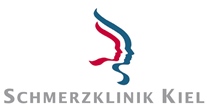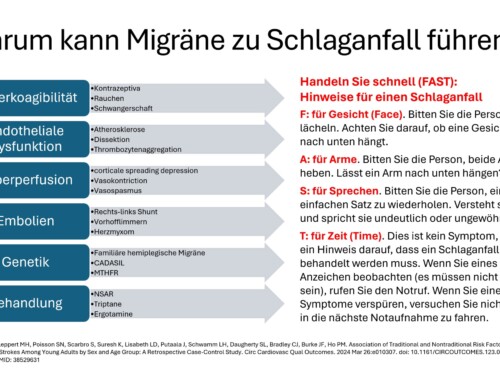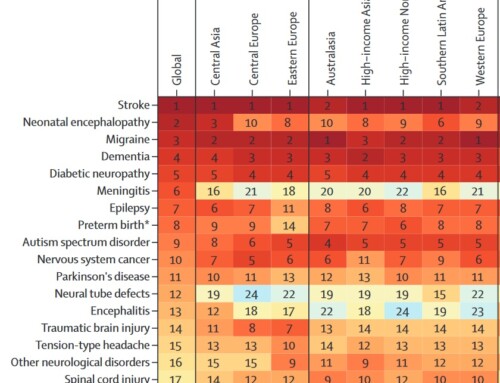A study currently published in “Lancet Neurology” involving the Kiel Pain Clinic shows that occipital nerve stimulation (ONS) is a promising treatment alternative for patients with drug-resistant chronic cluster headaches. In half of the patients, the frequency of attacks was reduced by at least 50% with electrical stimulation, which is similar to a pacemaker. Almost everyone who took part in the study would recommend the ONS to other sufferers, about three-quarters of them particularly strongly.
Cluster headache is the most common type of so-called trigemino-autonomic headache. The massive pain attacks usually affect the same side of the face in the area of the trigeminal nerve in the temporal region or the eye. Approximately 75% of those affected are men. Due to its high intensity, the pain severely impairs the quality of life of those affected. Inhalation of pure oxygen and subcutaneous administration of sumatriptan have been established as acute therapy. The guidelines recommend the use of verapamil to prevent cluster headache attacks. Lithium can also be used, but there are no randomized data on this. Corticosteroids are often used for short-term prophylaxis to bridge the time until prophylaxis such as verapamil takes effect. The effectiveness was recently scientifically proven in a German study [2]. Another treatment option for therapy-resistant cluster headache or “MICCH” (“medically intractable chronic cluster headache”) is occipital nerve stimulation (ONS). To do this, similar to a pacemaker, a small electrical pulse generator is implanted under the skin, from which thin electrodes run to the neck in the direction of the two occipital nerves. The stimulation causes tingling or numbness in the stimulation area. The mechanism of action is assumed to be a modification of the pain signals in the brainstem by the electrical signals. Previous studies on ONS were uncontrolled or open-label and small (ten patient populations with a total of 274 patients), the basic data were very heterogeneous and not all primary endpoints were available for all patients.
An international, multicenter phase III study involving the Kiel Pain Clinic has now been published (centers in the Netherlands, Belgium, Germany and Hungary), which evaluated the clinical effectiveness of ONS in a large, uniformly defined population in a randomized, double-blind controlled manner for the first time ( 2010 to 2017). The patients were on average 44 ± 13 years old and had suffered from headache attacks for an average of seven years. They had attacks at least four times a week and had not responded to (or could not tolerate/contraindicated) at least three prophylactic medications (including verapamil, lithium, methysergide, topiramate, gabapentin).
First there was an observation phase over 12 weeks, then followed by ONS over 24 weeks, randomized into two groups with either 100% or 30% stimulation intensity of the previously individually determined scale between paresthesia threshold and maximum tolerated current intensity (double-blind phase; n = 65 in the 100% ONS group and n=66 in the 30% ONS group). A double-blind comparison versus placebo (ie, implantation but no stimulation) would not be practical because stimulation is often recognized by patients. Afterwards, in weeks 25-48, further stimulation was carried out with individually optimized ONS dosages (open-label phase). The primary endpoint was weekly attack frequency (at weeks 21-24) compared to baseline frequencies. The follow-up period to date is two years.
Overall, both stimulation protocols led to a rapid and sustained reduction in attack frequency by an average of 50%, and pain intensity decreased by a third. The weekly seizure frequency at baseline was median 15.75 (IQR 9.44-24.75) and decreased to 7.38 (IQR 2.5-18.5) by week 24: median 17 in the 100% group .58 (9.83 to 29.33) to 9.5 (3.0-21.25) and in the 30% group from 15.0 (9.25-22.33) to 6.75 (1 .5-16.5). The median group difference in mean weekly seizure frequency at the end of the masked phase (weeks 21-24) was -2.42 (-5.17 to -3.33). In the blinded study phase, there were 129 adverse events in the 100% group and 95 events in the 30% group. None of these events were unusual, 17/129 and 8/95 events, respectively, required short-term hospitalization; Mostly it was local pain, impaired wound healing, neck stiffness and hardware problems. Overall, ONS was safe and well tolerated. When surveyed, over 90% of participants in both groups would recommend the therapy to other MICCH patients.
Prof. Hartmut Göbel, chief physician at the Kiel Pain Clinic, one of the scientists participating in the study: “The data opens up a further treatment option for those severely affected for cluster headaches that cannot otherwise be effectively treated. A careful diagnosis and indication in specialized centers is required. The results finally give hope for patients who have previously not been able to receive adequate treatment.”
Sources
Press release from the German Society for Neurology








Leave a comment